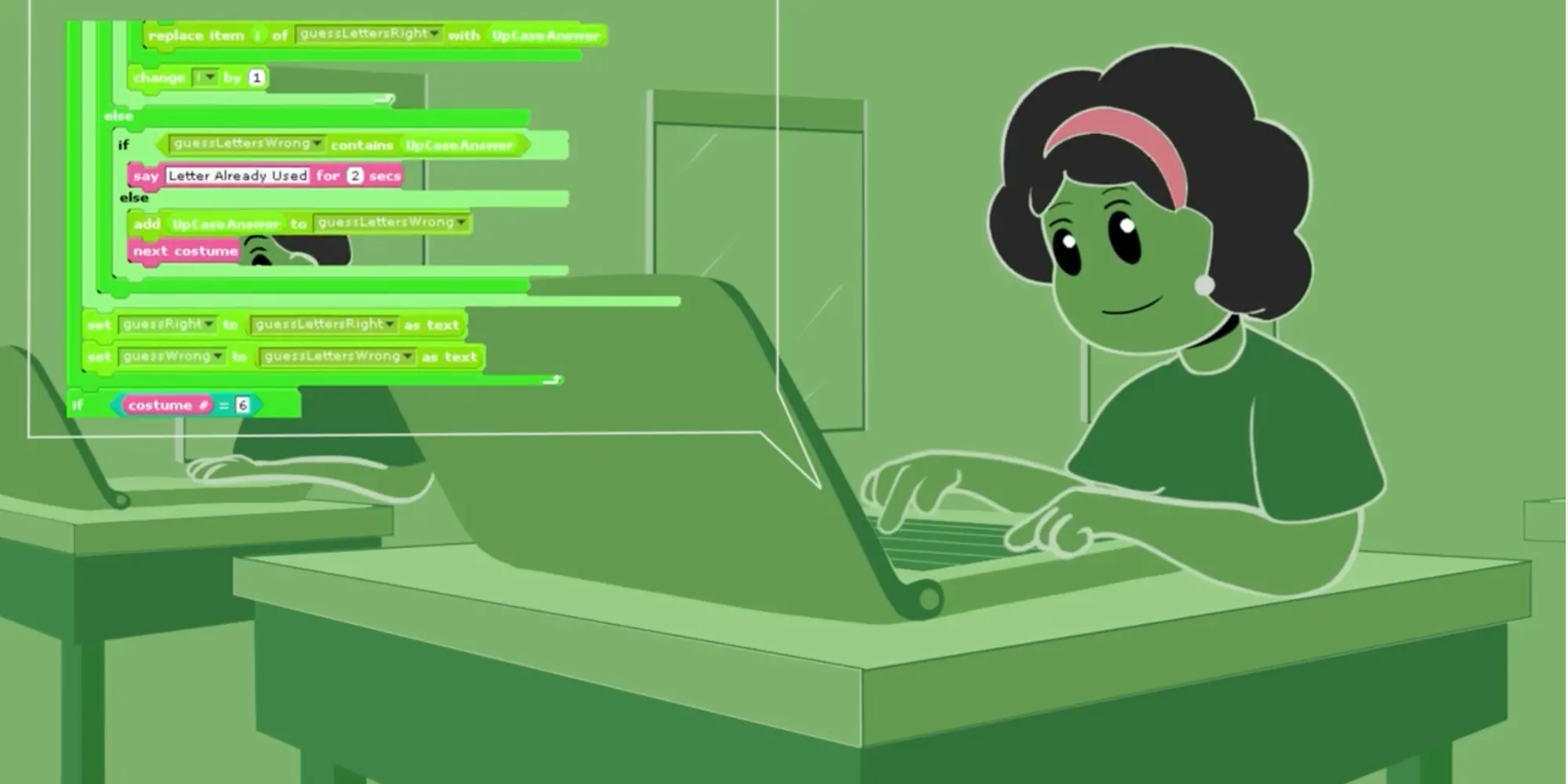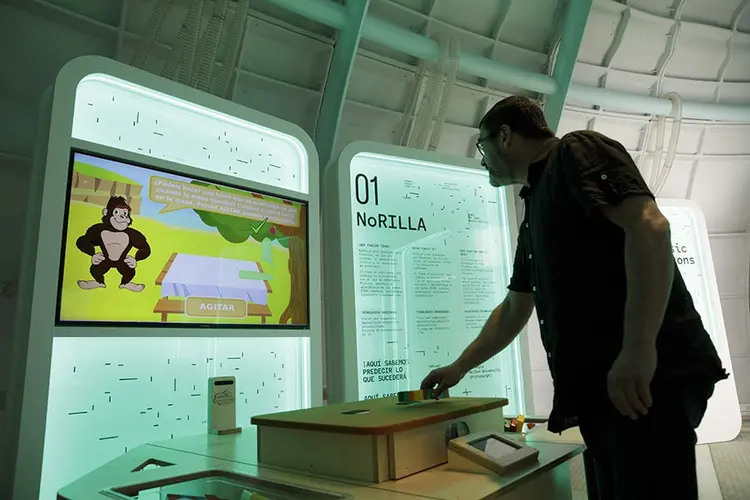
Coding for Animals Key To Engaging Children in STEM
An education pilot study bridges animal behavior research and computer coding to engage elementary school students in real-world, interdisciplinary science
Media Inquiries
Teachers today face a bit of a conundrum, according to a new study from researchers at Carnegie Mellon University and the Rochester Institute of Technology.
Their goal is to prepare young students to enter a rapidly changing world. Even basic jobs require technical proficiency, which requires computational and analytical skills. To address this need, many educators are pushing to fold these important STEM skills into elementary curriculum.
Here’s the problem. Young students can lose interest and even develop an aversion to the tasks that build the skills associated with computational thinking. Past studies have pointed to historic low completion rates in STEM fields, with computer science among the lowest. A bridge is needed to engage students in the tasks to develop these important 21st century skills.
“Sometimes students disengage from science, because they do not see the science that they are doing in the classroom as connected to the real world,” said Jessica Cantlon(opens in new window), the Ronald J. and Mary Ann Zdrojkowski Associate Professor of Developmental Neuroscience and Psychology at Carnegie Mellon. “When young students engage in authentic science experiences, they can absorb facts more effectively.”
Unlike in the classroom, science does not fall into neat, separated boxes. Real-world science is interdisciplinary. Past attempts to build this bridge have focused on topics, such as robotics, gaming or animations, but the niche nature of this subject often leaves many students uninterested.
Cantlon and her colleagues took a different approach. They merged a topic that children grades 3 to 6 enjoy (animals) with one that most kids might look at like a plate of steaming Brussels sprouts (computer coding). The results of their pilot program are available in the April 2 issue of the journal STEM Education Research(opens in new window).
“The focus of this pilot study is whether, in principle, students can acquire skills in computational thinking during a relatively short, loose format, authentic science experience,” said Cantlon. “By learning these skills, the students also maintained or gained excitement throughout the project’s unique immersive experience in animal behavior.”
Cantlon and her colleagues developed an educational program in collaboration with the Primate Portal(opens in new window), an exhibit at the Seneca Park Zoo in Rochester, in which the public can watch olive baboons solve problems presented as computerized tasks on a touchscreen computer.
Through the program, students learned a basic coding language (Scratch) to develop a game that olive baboons at the zoo play to test their intelligence. While the students have the freedom to create their game, they are given different frameworks as a starting point, such as a matching game or a search game, like “Where’s Waldo?” At the end of the five-day programming course, the students took a field trip to the zoo to watch the primates play the games they programmed.
“The students definitely struggle with the complexity of the code as they had little to no experience with coding,” said Greg Booth, a teacher in the REACH program for gifted/talented students at QUEST Elementary in the Hilton Central School District who worked with the researchers on this project. “They were not given the opportunity to do (coding) in school prior to this, and they had a tremendous amount of intrinsic motivation to learn and develop their coding skills.”
In the first iteration of this pilot project, the team engaged 57 elementary-aged students from three elementary schools in Western New York, of which 36 completed pre- and post-surveys to evaluate the skills acquired during the class.
“It is rare for anyone to collect data from informal, teacher–scientist interventions,” said Cantlon, who is first author on the study. “(The study’s) effect size is large, because (the students) learned a lot of new computational thinking skills by completing the coding projects.”
According to Cantlon, the effect size of the study is large because students began the course with little to no knowledge about coding and developed definite coding skills that supported computational thinking. For example, the students learned to write conditional statements, a loop in code and interpret logical statements. In addition, the students experienced a significant increase in accuracy and problem-solving attempts. The project also showed that it is possible to integrate learning and doing into curriculum for elementary-aged students.
“I love seeing kids get interested in science, especially girls,” said Caroline DeLong(opens in new window), professor at RIT and co-author on the study. “This program is a fantastic way to utilize kids’ love of animals as a bridge to learning new computational skills and a way to show them how science works in real time.”
The students’ computational thinking scores improved by 17% from the beginning of the course to the end. There was no difference in the level of improvement between boys and girls who participated in the program. In addition, the students spoke highly of the program, citing their interest in creativity and independence during the learning process. According to Cantlon, the program shows that it is possible to enhance students’ interest in science and cultivate essential 21st-century skills.
“Yes it is possible to engage students early, in elementary school, and hook them into STEM interests in something that they might think is boring — coding,” said Cantlon. “It is important to engage students before they make up their mind that STEM isn’t for them and while they are still open to learning about STEM and hopefully come to a new conclusion that STEM is for them.”
Cantlon and her colleagues aim to expand this approach to engage a more diverse group of students in future studies.
Cantlon and DeLong were joined by Katherine Becker at RIT on the project, titled “Computational Thinking During a Short, Authentic, Interdisciplinary STEM Experience for Elementary Students.” The project received funding from the National Science Foundation and a fund associated with the Ronald and Mary Ann Zdrojkowski Chair in Developmental Neuroscience at CMU.
Student responses to a learning query from one of the post-course surveys:
“I learned that baboons are just like us.”
“The coolest thing I learned was how to use the ‘if then else’ block.”
“The thing I got to learn is that baboons can do math! (They are super intelligent.)”
“I learned how to think mechanically.”




